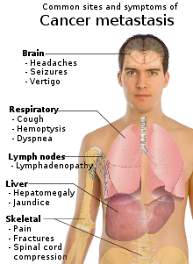Robert J. Cerfolio M.D.
Dr. Robert Cerfolio is a thoracic surgeon at the University of Alabama at Birmingham Medical Center Department of Cardiothoracic Surgery. Dr. Cerfolio also serves as the Chief and Director of Thoracic Surgery at the Birmingham Veterans Administration Hospital. His expertise is wide-ranging but includes lung cancer, esophageal surgery, tracheal surgery, bronchopleural fistula, and video assisted thoroscopy. His most recent work has been focused on developing gene therapies for those diagnosed with esophageal cancer.
Dr. Cerfolio received his Bachelors degree from the University of Rochester in 1984. He then enrolled at the University of Rochester Medical Center in 1988. After an internship in general surgery at the Hartford Hospital St. Francis, he enrolled in a residency program in urology at Cornell-New York Hospital, an affiliate of the Memorial Sloan-Kettering Cancer Center, from 1991-1993. After completing his general surgery residency at the esteemed Mayo Clinic in Rochester, Minnesota, Dr. Cerfolio began a cardiothoracic fellowship, finishing in 1996.
Dr. Cerfolio has been consistently ranked as one of America’s best doctors, a distinction endowed by the voting of his peers. He has also developed a reputation as one of the busiest doctors in the country. In 1999, Dr. Cerfolio performed nearly 800 assorted operations of the lungs, esophagus, and trachea. He is not only widely considered exceptional within the US for his work, but also as one of the best thoracic surgeons in the world.
Dr. Cerfolio is more than just a surgeon however. He is also an avid researcher. Dr. Cerfolioa has presented to the American Society of Thoracic Surgeons on a number of occasions in addition to publishing dozens of papers on emerging therapies and techniques in thoracic surgery. As a leader in the field he is a member of several professional organizations. He is a statured member of both the American Association of Thoracic Surgery and the Southern Thoracic Surgical Association.
Surgeons and Oncologists
United Kingdom
David A. Waller, MD
Glenfield Hospital
Groby Road
Leicester
Leicestershire
LE3 9QP
United Kingdom
Specialty: Surgery for pleural mesothelioma
Tom Treasure, MD, MS, FRCS
Guy's Hospital
St. Thomas' Street
London
Greater London
SE1 9RT
United Kingdom
Specialty: Surgery for pleural mesothelioma
Andrew Ritchie, MD, PhD
Papworth Hospital
Papworth Everard
Cambridge
Cambridgeshire
CB3 8RE
United Kingdom
Specialty: Surgery for pleural mesothelioma
Dr. Ritchie is a Consultant Cardiothoracic and Transplant Surgeon at Papworth Hospital NHS Trust. He has a specific interest in pleural mesothelioma.
Loic Lang-Lazdunski, MD, PhD FRCS
Guy's Hospital
St. Thomas Street
London
SE1 9RT
United Kingdom
Specialty: Thoracic Surgery
Dr. Lang-Lazdunski has been leading the Mesothelioma Program at Guy’s Hospital since 2003, and has expertise in EPP, Pleurectomy/Decortication and VATS pleurodesis. He is one of two surgeons involved in the ongoing MARS trial.
Robin M. Rudd, MA, MD, FRCP
54 New Cavendish Street
London, W1G 8TQ
United Kingdom
Specialties: Respiratory oncology, pleural mesothelioma
Also at:
The London Chest Hospital
Bonner Road
London
Greater London
E2 9JX
United Kingdom
St. Bartholomew's Hospital
West Smithfield
London
Greater London
EC1A 7BE
United Kingdom
Dr. Rudd is Co-Director of Bart’s Mesothelioma Research, and is a Consultant in Medical Oncology at St. Bartholomew’s Hospital. He is world renowned as an expert on mesothelioma diagnosis and treatment, as well as lung cancer and other asbestos-related diseases.
Jeremy P.C. Steele, MD, MRCP
54 New Cavendish Street
London, W1G 8TQ
United Kingdom
Specialty: Respiratory oncology, pleural mesothelioma
Dr. Steele is Co-Director of Bart’s Mesothelioma Research, and is a Consultant in Medical Oncology at St. Bartholomew’s Hospital, the Royal London Hospital and the London Chest Hospital. He is also a member of the Board of Directors of the International Mesothelioma Interest Group (IMIG) and is chairman of Mesothelioma UK.
Ireland
Kenneth J. O’Byrne, MD
St. James' Hospital
James Street
Dublin 8
Ireland
Specialty: Oncology
Germany
Dr. med. Erich Hecker
Klinikum Bremen-Ost gGmbH
Lehrkrankenhaus der Universität Göttingen
Züricher Str. 40
28325 Bremen
Germany
Telephone: 0421 408 – 0
Specialty: Surgery for pleural mesothelioma
Dr. med. Ludger Hillejan
Klinik für Thoraxchirurgie
Klinikum St. Georg
Krankenhaus St. Raphael
Bremer Strasse 31
49179 Ostercappeln
Germany
Specialty: Surgery for pleural mesothelioma
Dr. med. Herwart Müller
Onkologische Chirurgie
Ofenthaler Weg 20
D-97762 Hammelburg
Germany
Speciality: Surgery for peritoneal mesothelioma
Italy
Dr. Marcello Deraco
U. O. Melanoma e Sarcoma
Istituto Nazionale Tumori Milano
Via Venezian, 1
20133 Milano
Italy
Specialty: Surgery for peritoneal mesothelioma
Spain
Alberto Gómez Portilla, MD, PhD
Policlinica San José
Beato Tomas de Zumarraga, 10
01008 - Vitoria
Spain
Specialty: Surgery for peritoneal mesothelioma
Australia




